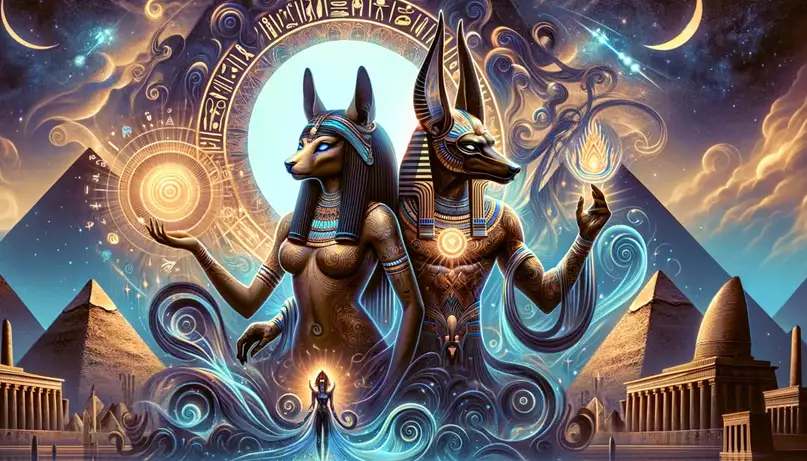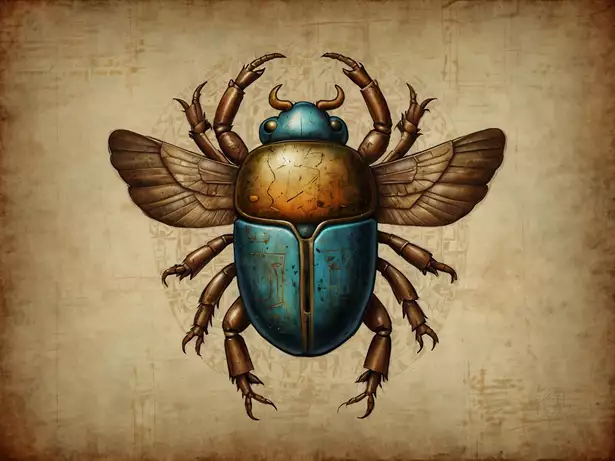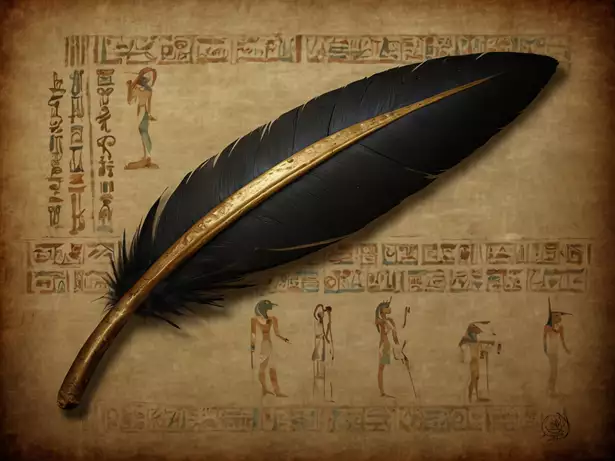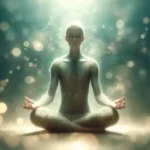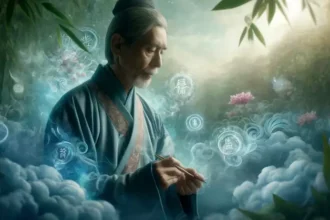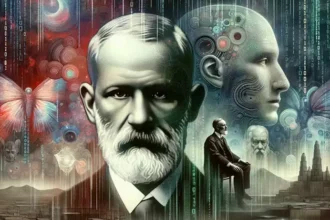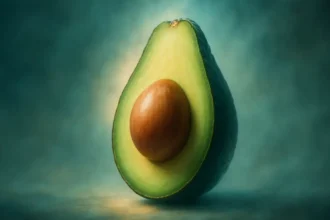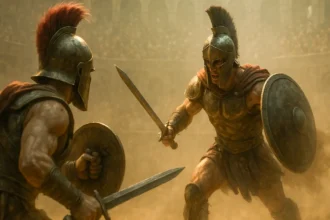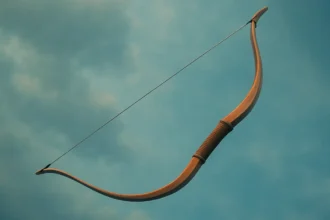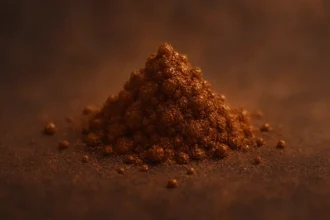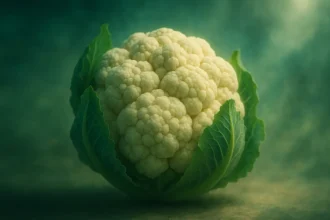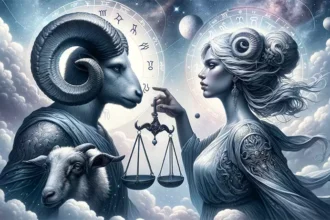Dream interpretation in ancient Egypt was no small affair; it was akin to reading divine texts! Picture this: you’re drifting in your sleep and suddenly, you’re rowing a boat made of reeds on the Nile.
In ancient Egypt, this wasn’t just a cool dream; it suggested prosperity was on its way.
What about flying? That could hint at your desire to rise in society. And if a snake slithered by in your sleep, you’d better watch out, enemies might be plotting.
Let’s explore how these symbols might have spiced up your ancient nightly escapades!
The Dream Principles in Ancient Egypt
In ancient Egypt, dreams were a portal to the divine, crucial for personal guidance and national decisions alike. The Egyptians believed dreams were messages from the gods, packed with symbols needing expert decoding.
Even pharaohs, like Thutmose IV, acted on these celestial tips, his dream at the Sphinx promised him kingship. For commoners, understanding a dream could mean the difference between a good harvest or a flop.
So next time you find yourself dreaming about an exam you didn’t study for, think of the Egyptians, they’d probably see it as a nudge to prepare for upcoming challenges!
Bes – The God of Dreams

In the pantheon of ancient Egyptian deities, Bes stands out not just for his appearance but for his unique role among the gods. Unlike the regal and often distant figures of other gods, Bes was approachable, depicted as a dwarf with lion-like features and a protruding tongue, symbolizing his connection to the mundane and the playful aspects of life.
Historically, Bes was considered a guardian and protector, his image often found in homes, particularly in bedrooms and spaces for women and children. He was not just a protector of the physical home; he was also believed to ward off evil spirits and misfortune.
This protective role extended into the realm of dreams, where the ancient Egyptians saw sleep as a vulnerable state needing safeguarding.
Bes’s association with dreams primarily revolves around his role as a protector during the night. Egyptians believed that dreams were significant, potentially omens or messages from the divine.
Having Bes watch over them as they slept was thought to fend off nightmares, the harmful tricks of malevolent beings, and ensure that the messages conveyed in dreams were clear and beneficial.
Moreover, Bes was not only a guardian but also a symbol of good luck and joy. His presence in households was believed to promote happiness and laughter, essential components for a good and fulfilling life.
This jovial nature might also influence the dreams of those he protected, imbuing them with positive symbols and comforting scenarios.
In artistic depictions, Bes is often shown playing a tambourine or harp, dancing, or engaging in some other form of merriment, underscoring his role in promoting not only protection but also enjoyment and pleasure. These depictions highlight his dual role in the daily lives of the Egyptians and their dream experiences.
Thus, in the realm of dreams, Bes served as both a shield against the dark and a bringer of light-hearted contentment, making him a uniquely beloved figure in the ancient Egyptian spiritual landscape. His influence suggests that the Egyptians valued a balance between the serious and lighter sides of life, even in their spiritual practices.
Dream Symbols in Ancient Egypt
- Pyramid: Symbolizing the journey of the soul in the afterlife, dreaming of a pyramid often suggested a desire for spiritual growth and a quest for hidden knowledge.
- Scarab Beetle: Representing transformation and rebirth, a dream featuring a scarab indicates personal growth and the emergence of new opportunities.

a dream featuring a scarab indicates personal growth and the emergence of new opportunities. - Ankh: This key of life symbolizes vitality and immortality.
In dreams, the Ankh often pointed to a longing for spiritual growth or a reminder to cherish life fully.
- Eye of Horus (Udjat Eye): A potent symbol of protection and healing, seeing this in a dream suggests divine guidance and protection is present in your life.
- Water/Nile River: Vital for its life-giving properties, water, especially the Nile, in dreams symbolizes abundance, fertility, and the flow of life.
- Hieroglyphics: Representing the need to decipher hidden messages or gain deeper understanding, dreaming of hieroglyphics suggested a quest for knowledge and truth.
- Pharaoh: Dreaming of a pharaoh symbolized power, authority, and a connection to divine guidance, emphasizing leadership and control in one’s life.
- Lotus Flower: Often associated with creation and the sun, the lotus flower in dreams symbolizes rebirth, enlightenment, and personal growth.
- Scepter: A symbol of authority and power, dreaming of a scepter indicated issues of control and power dynamics in one’s waking life.
- Lion: Representing strength and power, a lion in a dream could also indicate facing a powerful enemy or overcoming significant challenges.
- Eye of Ra: This symbol, representing the sun god Ra’s power, vigilance, and protective qualities, was believed to watch over humanity and dispel darkness. In dreams, it may suggest divine protection and enlightenment

The eye of Ra – In dreams, it may suggest divine protection and enlightenment - Ouroboros: Depicted as a serpent devouring its tail, this symbol of eternal renewal and the cyclical nature of existence might appear in dreams to indicate the start of a new beginning or personal transformation
- Amenta: This symbol represents the realm of the dead, where souls journey after life.
Dreaming of Amenta could reflect transitions, endings, or connections to the afterlife
- Djed Pillar: Known as the backbone of Osiris, this symbol represents stability and strength.
In dreams, it could suggest the need for resilience or support during challenging times
- Tiet (Knot of Isis): Resembling the ankh, this symbol is linked to life and the protective magic of the goddess Isis.
It might appear in dreams to indicate protection or the need for healing
- Ka: Representing the spiritual double and life force of a person, the Ka symbol in a dream might suggest exploring one’s identity or reconnecting with one’s inner essence
- Ba: Often depicted as a bird with a human head, this symbol represents the personality or soul. Dreaming of the Ba might indicate a journey of self-discovery or dealing with one’s legacy
- Feather of Maat: Symbolizing truth and justice, seeing this feather in a dream might suggest a period of self-evaluation or a quest for truth and fairness in one’s life

Feather of Maat: Symbolizing truth and justice - Was Scepter: Symbolic of power and dominion, this symbol in a dream might reflect issues of control, power dynamics, or the need for authority in a situation.
Conclusion
Exploring ancient Egyptian dream symbols offers a fascinating glimpse into how this sophisticated civilization understood the unseen forces of their world.
The Egyptians saw dreams as channels for divine messages, guiding everything from personal growth to state governance.
Today, these symbols still captivate our imagination and enrich our understanding of cultural interpretations of dreams. By delving into the meanings behind symbols like the Ankh, Scarab, or Eye of Ra, we connect with ancient wisdom that viewed dreams as powerful tools for insight and guidance.
Whether for psychological reflection or spiritual exploration, the legacy of Egyptian dream interpretation encourages us to consider deeper meanings in our own nightly journeys. This heritage reminds us that, though separated by millennia, the human quest to find meaning in dreams is a timeless endeavor.
Sources and Further Reading
- “The Egyptian Dream Book” – Ancient Origins: Explores a range of dream interpretations documented in the ancient Egyptian ‘Dream Book’. Ancient Origins
- “Egyptian Dream Meaning: Decoding the Symbolism of Ancient Egypt in Your Dreams” – InsideMyDream: Discusses how dream symbols like the Eye of Horus and Ankh played roles in ancient Egyptian culture. InsideMyDream
- “Egyptian (ancient) Dream Beliefs” – Dream Hawk: Offers insights into how ancient Egyptians viewed dreams as messages from the gods. Dream Hawk
- “Six Ancient Egyptian Perspectives on Dream Meanings” – Dream Quria: Covers the significance of dreams in ancient Egyptian society and their use in decision-making. Dream Quria
- “Egyptian Dream Interpretation Demystified: Unveiling Hidden Meanings” – Dream Evaluator: Provides an overview of common symbols in ancient Egyptian dream interpretation. Dream Evaluator


